How the Amish are saving the disappearing art form of wood-working
In a world managed by software and cheap materials shipped from overseas, the Amish are preserving an artistic form of construction from centuries past
PART 5
(continued)
I come from a long line of artists on both sides of my family. To my mother’s side, you have painters, seamstresses, crafters, collectors, drawers, and designers. To my father’s side, you have photographers, videographers, video editors, musicians, poets, and graphic designers.
I grew up around art. It permeated everything in my childhood. Only now am I able to reflect back on my formative years and really appreciate the impression the constant creativity left on me. Every night when I climbed the stairs in our home to go to bed, I would pass a mural on the wall that depicted our property throughout the four seasons typical to Upstate New York. My mother painted the mural, as well as the walls throughout the rest of the house.
Art was ‘normal’ to my family. As I became an adult, I realized that level of art was not normal in other families. In fact, I learned that my family was probably the most artistic family in my school district. That was one of those depressing realizations that hits you hard during your early 20s.
Accepting that modern society was devoid of almost all creativity REALLY hit me hard as I sat down at my first corporate job in New York City towards the end of 2015. How I dressed, talked, and the ideas I presented for board meetings were mocked or stollen. I’ll never forget the day I concocted one of the most dramatic text messages of my life to my mother while I sat at my windowless desk on Park Avenue:
“I feel like I’m a fairy they stuffed into a bird cage and locked the door. And every day, they reach into the cage and pluck a set of wings off my back.”
(I should have known then I would end up a writer lol.)
As you can guess if you’ve been reading along with me so far in this series… I didn’t last long at this job. In fact, I quit the job after four-weeks with zero clue how I was going to pay my rent. I started freelance writing on Fiverr and one thing led to another, and here you find me today typing away at my laptop from my farm.
As someone who grew up around all different kinds of artists, and their artistic friends, I am able to pinpoint a person living in their God-given creativity from a mile away. I am able to identify this archetype because I rarely come across them in a world filled with people who have shut down their creative centers. When someone has completely closed off their innate creativity, their auras radiate duller colors around their bodies - or at least that’s what I see when I attempt to look into the energy field.
The day I met the Amish, I was instantly floored at the vibrancy of the colors dancing around them. Knowing so little about construction at the time, as well as Amish culture, I was perplexed.
“Why are people who engage in things as ‘intense and technical’ as excavation and building driveways perceivably the most creative people I’ve ever met?” I thought to myself. Maybe I wasn’t able to read auras like I thought I was…
The more time I spent with the Amish, the more I realized they had experienced a childhood similar to my own. Well, their childhood was filled with more hard and soft skill development and construction, of course, but I could tell they were exposed to the same amount (if not more) of creativity and artistry as me. I felt an immediate kindred connection to them. It was hard to explain. I could tell they felt it with me as well.
And just in case I was wrong on that thought… I later learned my barn was one of the very first major construction projects this community had accepted since moving to Upstate New York from Lancaster, Pennsylvania only a few years prior. The brothers had been working at local prefab shed stores when they decided to jump ship and go public with their excavation company. As fate would have it, I happened to visit one of the stores they worked at shortly after their departure, which is how I came in possession of their business card that listed their phone number.
They must have known from one artist to another that I would be understanding, supportive, and appreciative of their artistry. I am not sure to this day that I can find words in the English language to describe just how impressed I was by their wood-working magic they infused into my barn.
The start of wood-working with Do Little Renovations
There I was, facing my closed-in barn just days after the Amish had accomplished what I previously thought to be impossible. Their entire community raised the barn walls, closed in the roof, placed the windows, and finished the entryway in less than two-days. Still shocked from that form of artistry in its own right, I stood there across from my barn listening to the sounds of generator-powered saws searing through pieces of wood.
It was easy for me to film and photograph these guys from far away outside. I didn’t have to get in their way. But now that the construction had moved inside, this would be a different form of photography. I would have to get over the ‘awkwardness’ of pointing a phone camera at these men while they worked their magic. One thing I learned throughout my time with the Amish is that there is no such thing as ‘awkward’ in their world. There’s hard work, honesty, efficiency, art, focus, and humility before God. Anything I felt might be awkward lived entirely in my head.
They got right to work laying the pine on the interior wall of the tack room in my barn before they brought in their cousins to do the insulation later that week.
At the same time, the rest of the team put the loft frame into place, carrying in pieces of wood that I knew would become the stairs to an absolutely stunning overlooking level to the barn. I decided at the last second to add the loft to the barn based on budgeting concerns - I knew I would be cutting it close, but after I watched these guys break ground on the barn the month prior, I knew it would be worth every penny having them add the loft. I was right.
As more wood was added to the interior of the barn, I noticed something energetically occurring in the space. The wood they were working with had a positive vibration to it. It wasn’t like the other materials or synthetic products or clothes we buy at the store today, shipped here from (usually) China. I could feel this was wood that was harvested right in Upstate New York, presumably inside of their community.
I asked their driver about where the wood came from.
“These guys grab almost all of their stuff from 7M Supply in Canajoharie each morning before we drive out here,” he said. “It’s an Amish-owned and managed construction materials and supply store.”
“So it’s essentially the Amish Home Depot,” I jokingly said in return. The driver chuckled, “Yes, that’s sort of the gist.”
I realized that comparing 7M Supply to Home Depot isn’t an accurate comparison at all. Home Depot is stocked with materials that have been on multiple flights from around the world to reach your local store. With 7M, the materials they were sourcing for my barn were grown, harvested, and managed right here on the soil we all call home. It piqued my interest as someone who is extremely passionate about setting up local supply chains in the future.
I could almost see the visual of the Amish men who had harvested, transported, and organized the wood before it got to my barn. I could feel that same calming Amish energy radiating out of the wood, from every corner of the structure.
“I am going to be entirely surrounded by good energy inside of this building, aren’t I,” I said to the driver. He smiled and said, “Oh absolutely. You can’t go wrong with these guys.”
While the day came to a close as they laid what wood they could before the spray foam insulation, I caught Sam, the boss of the whole shebang, making custom wooden barn doors that would roll in front of my modern sealed doors to hide them from afar. This optical illusion was all their idea! Knowing I needed doors that locked and sealed shut, they suggested having these classic barn doors on wheels outside of the locking doors to keep up with my aesthetics plan.
“That is brilliant,” I said to them. “Absolutely, let’s do it.”
Figuring they would show up one day with barn doors they purchased somewhere, already assembled, I was shocked to watch the boss, no less, make them by hand on the floor of my barn. Even more impressive, this was one of many instances to come where I witnessed them working with wood… without a measuring tape. They did not need to measure the dimensions to get it exactly right.
Just let that sink in for a moment. That’s how versed they are in the art of wood-working.
Their driver also let me in on a little Amish construction secret… “They always put the X on their barn doors in the bottom half of the door. It’s just something the Amish do,” he told me. This was one of many Amish “Easter eggs” they leave to mark their construction footprint, which brings me great joy today when I notice these subtle details out and about in the counties around my farm.
The brothers told me later that week their cousin and his company would be coming by to do the spray foam insulation.
The two brothers managing my barn project were so committed to excellence in everything that they did… that they had their cousin come back a few times to ensure the insulation was perfect. I remember the day John came to see the first round of insulation, shaking his head quietly as he walked around.
It looked fine to me… but what did I know?
To this day, people comment on my photos and videos online, figuring I didn’t have this barn insulated. Trust me… it’s so unbelievably insulated that when the temps have been dipping into the 40s at night this week, the inside of my barn has remained at 72 degrees with no heat on whatsoever.
(Note: the Amish were in favor of rock wool insulation as the most effective and environmentally-friendly option for the barn. It just didn’t fit into my budget, sadly. If I ever do this all over again, I will be opting for the rock wool!)
With the insulation done, it was show-time for the interior wood-working. The brother’s company overseeing the whole project, BluRail Excavating, partnered with Do Little Renovations, another Amish-company from their village, to complete the interior wood portion. I adored the Amish working with Do Little Renovations just as much as BluRail Excavating. Every day I came by while they were cutting wood, the lads would be smiling ear-to-ear, happy to practice their craftsmanship another day.
Like the Lapp brothers in charge of the whole barn project, these guys had amazing senses of humor. I could hear them giggling from outside.
I opted for 45-degree-angle tongue-and-groove around the main section of the barn. I only knew this 45-degree-angle option existed after visiting Amish homes earlier that winter to look around their barns. While John was showing me the materials in his barn, he pointed to the wood and said to me, “You know, this is available at 45-degrees.” It took me a moment to process what he meant. “Oh, as in laid at an angle? That sounds cool!” I said, dumbly.
“Yes, let’s do that. That’ll add an edgy, unique look to the barn, I think…” I said again.
The brothers seemed excited by my decision to go with this style of wood presentation. I understood why as it came together before me. The Amish wood-workers had to very carefully and precisely lay each piece of wood so it lined up at the center, as you can see in photo above. They had to cut through many pieces of wood and employ laser-sharp focus to get it right. I knew that construction professionals with smartphones could never, ever get it as precisely perfect as these guys. They’d be too distracted.
Watching these men so meticulously complete the interior of my barn made me feel like I was watching a lost art form that has almost completely disappeared from our English society today. With our fancy construction tools, unnecessary accessories, distracting technology, and flimsy materials flown in from around the world, our idea of ‘wood-working’ could be considered offensive to these guys.
While the 45-degree-angle tongue-and-groove was being cut and finished, part of the wood-working team was also working on the loft across from it. It’s hard for me to identify a favorite ‘part’ of my barn, but if I had to choose, it would be the loft. I had asked the brothers to infuse as much traditional Amish construction art into my barn as possible. They listened! They used mortise-and-tenon joinery work to assemble the loft stairs.
(What does that mean, you might ask, as I would never have known that phrase a few months ago?)
It means they used cut-out pieces of wood, plus glue, to interlock the pieces together. No nails. It creates the smoothest, sturdiest, and prettiest construction I have ever seen.
And don’t get me started on the loft railings. Nowhere in the description of this barn did the Amish let me know they were going to HAND-MAKE gorgeous black-accented railings for the loft. Every single black baluster was placed, by hand, into the wood to assemble the railings. Many times, the Amish doing this were able to do it with no measuring tape or fancy tools. It made my jaw drop.
I couldn’t help but reflect, every single day of witnessing this in action, that we are failing today’s children by not equipping them with a skill they’ve mastered by the time they turn 18.
I was chatting with Marcus, the man in charge of the wood-working services, at the barn one day, and he told me that they had all been working with wood, in their hands, since they were three-years-old. By the time you’re 30, he said, it’s like a fluent language to your body. You just know what to do.
“Though, that’s not to say it’s not hard on the body,” he laughed. “That’s why I made the Amish directories. As much as I love working with wood, I’ve been doing it for 32-years. I can’t do it forever.”
I watched countless fathers and sons assemble the interior of my barn, side-by-side. I noticed that the fathers never hovered over their sons or loudly corrected them. They would give their sons space to get it right, and if a son didn’t (rarely happened), the father would walk over and very, very quietly guide his son. It built up a confidence in the sons that I could see in their body language - they were proud of the work they were completing with their fathers.
It didn’t just stop at fathers and sons - there were nephews, cousins, and uncles all working together. I realized that the precious energy that’s radiated out of a parent working in tandem with their kid was captured in the wood throughout my barn. By the end, the frequency in the wood was so pure, so divine that although I didn’t know the future of the structure or business, I did know it had to be something amazing that helps people, the environment, and animals. I think I am well on my way to fulfilling that prediction!
The Amish have their fair-share of problems in their community, sure, just like the rest of us but… most of the problems plaguing our modern society could be fixed if we spent some time observing these individuals in action. Artists of the highest caliber, the Amish are single-handedly preserving a construction art form from centuries ago, passing it on to their children before they reach the age of 18.
That’s how you create legacy skills. That’s how we ensure critical skill sets aren’t lost in the artificial intelligence sands of time.
Which isn’t to demonize technology. In fact, this Amish community was quite comfortable with technology. I would even say they had a better grasp on some technological elements than those who live in our electricity-filled world. You will never believe the tech suggestions and accessories these guys found for me on Amazon… you’ll have to check back next week to learn more!
(As for the price figures related to all this construction… I will break that down in my cost series, which I am also publishing here to House of Green! Next up: covering the foundation and in-floor radiant heat pricing).
To read part 4, click here.
To read part 3, click here.
To read part 2, click here.
To read part 1, click here.





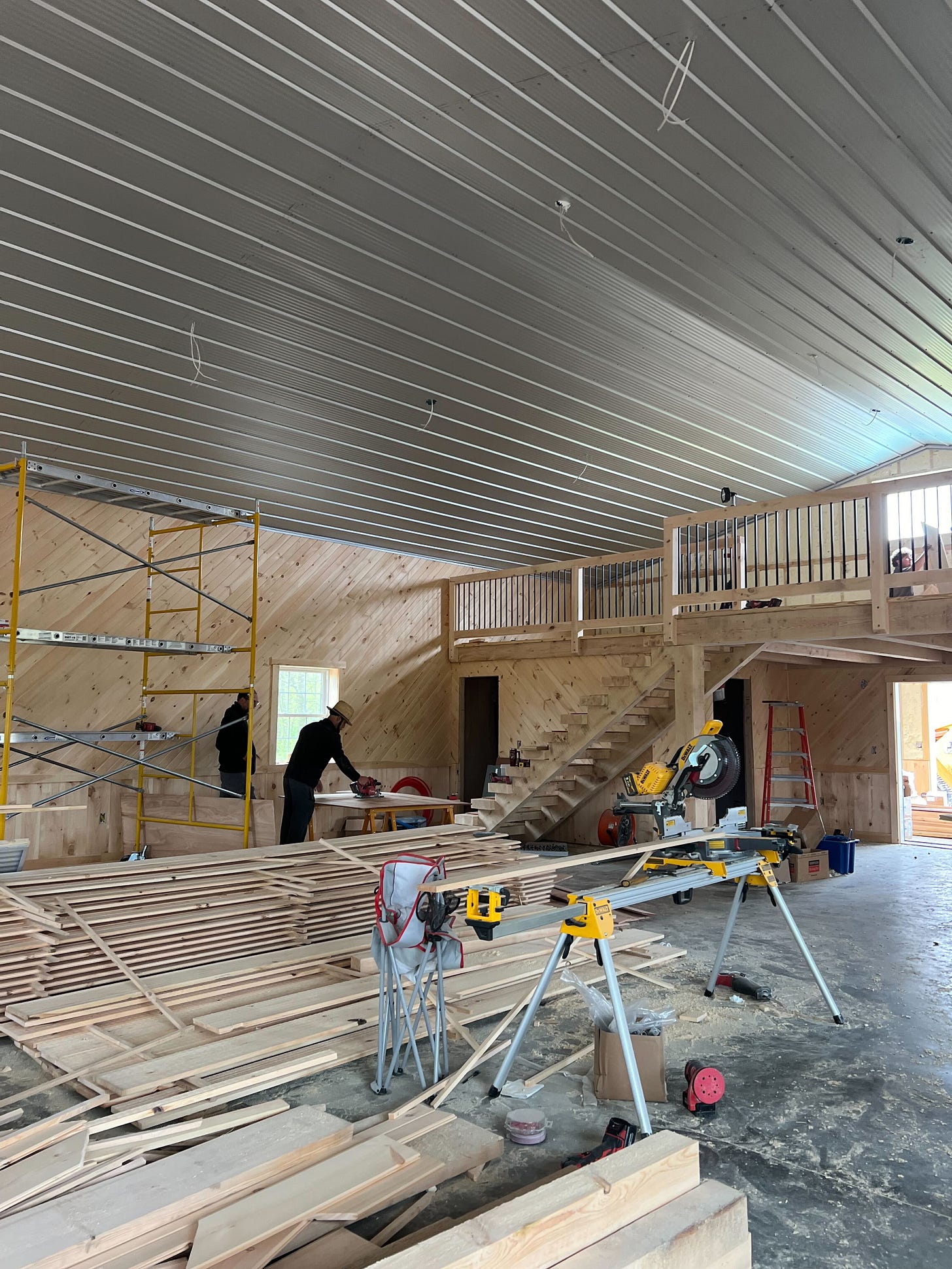
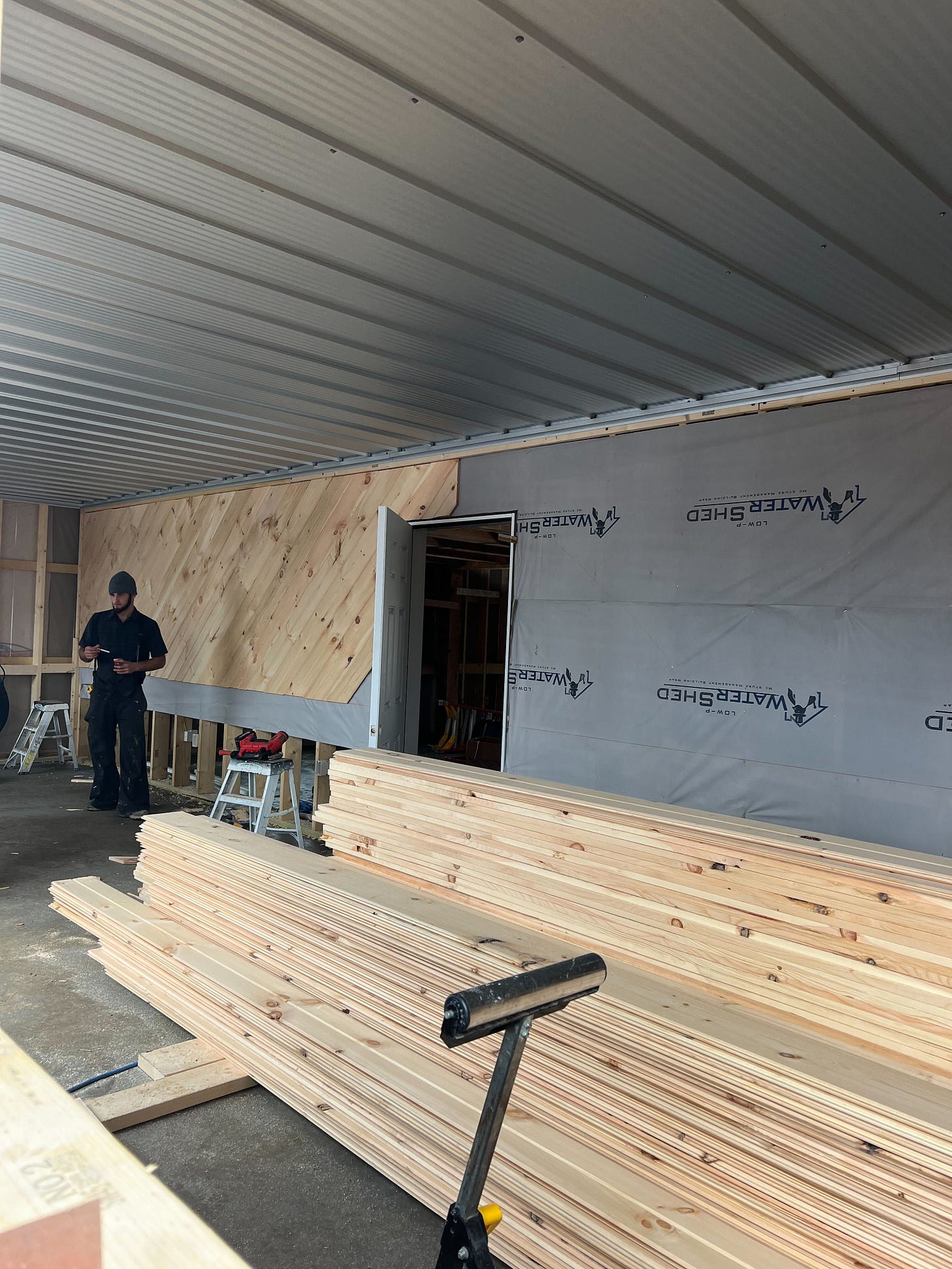
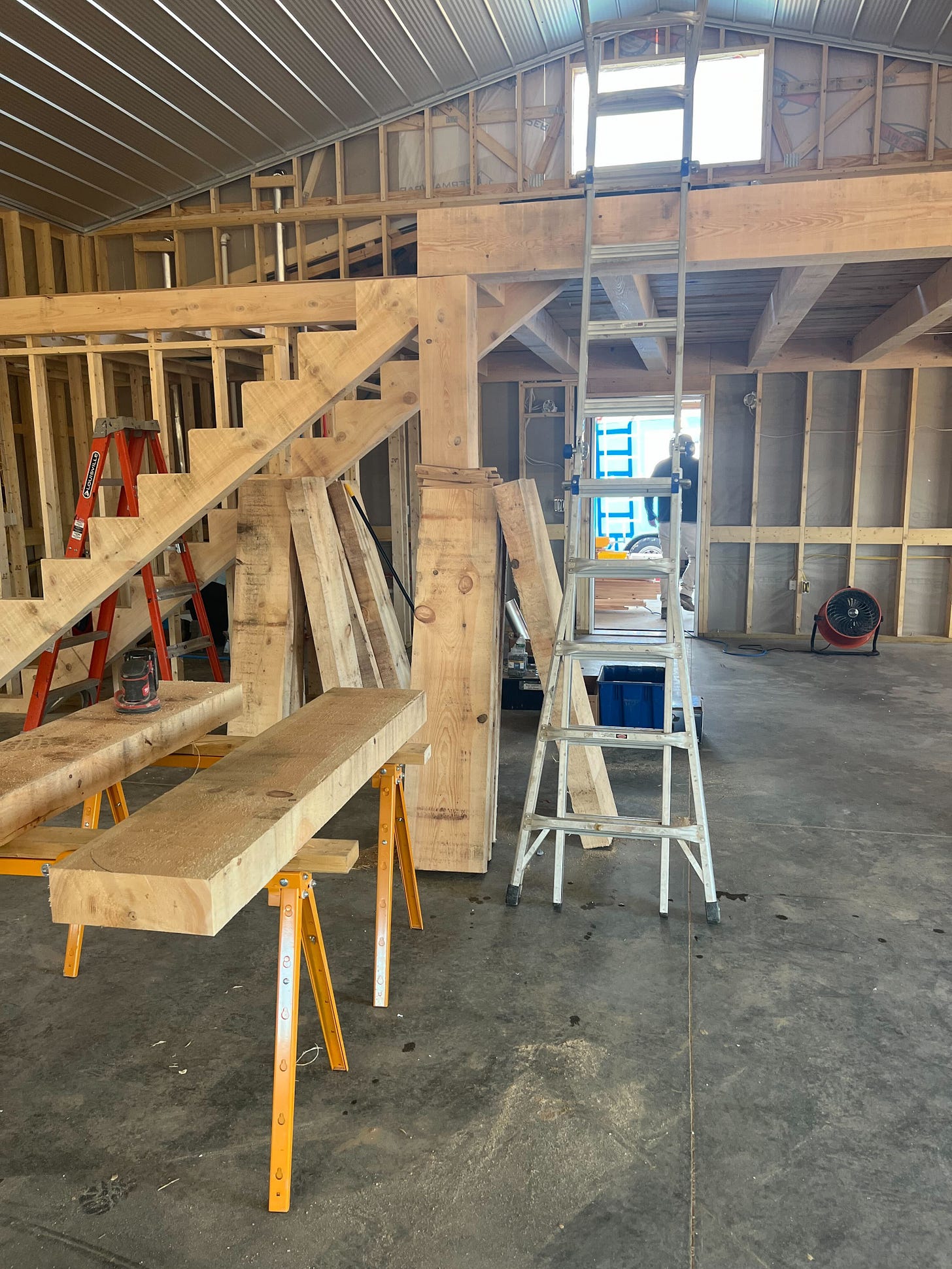
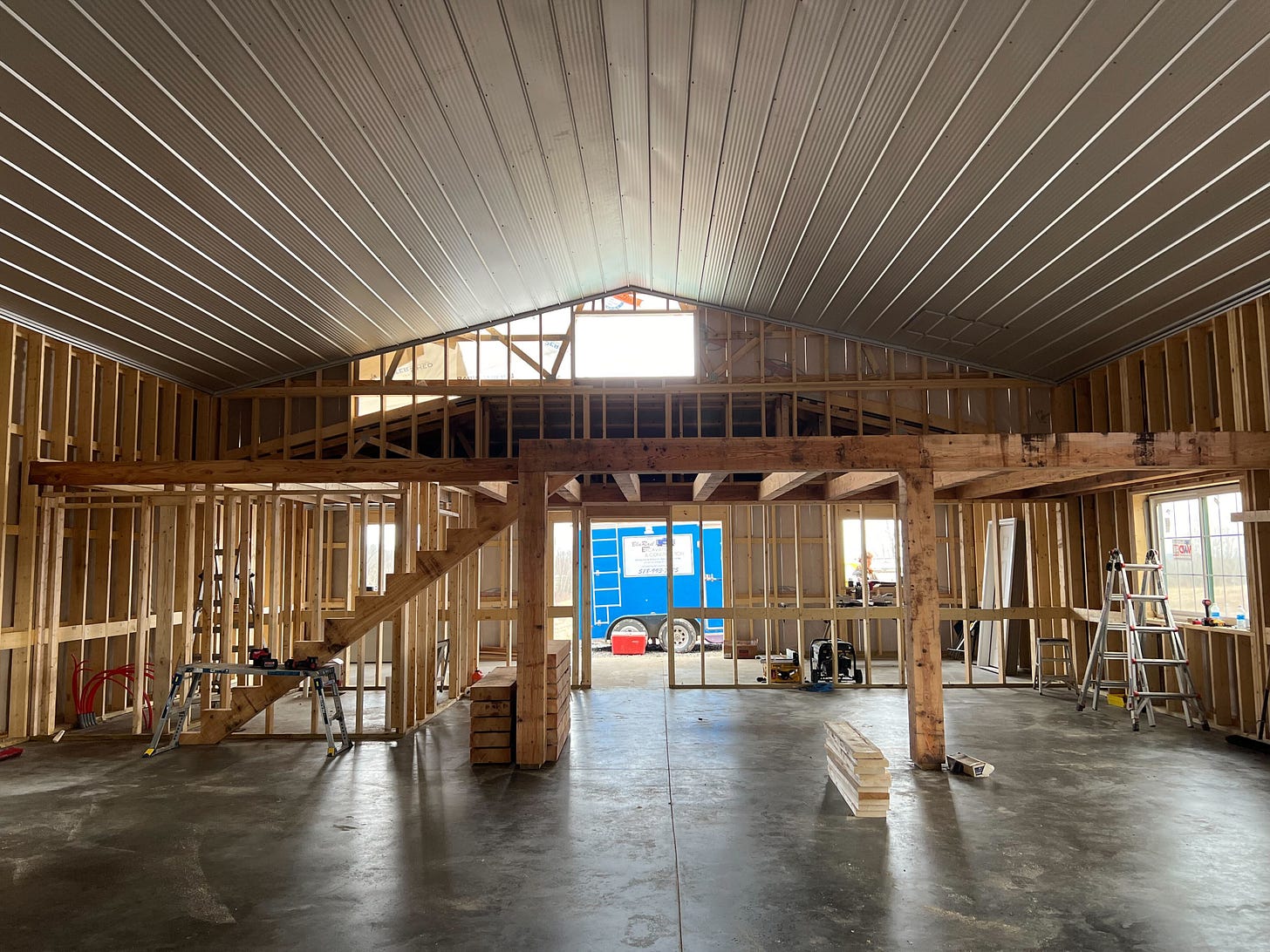
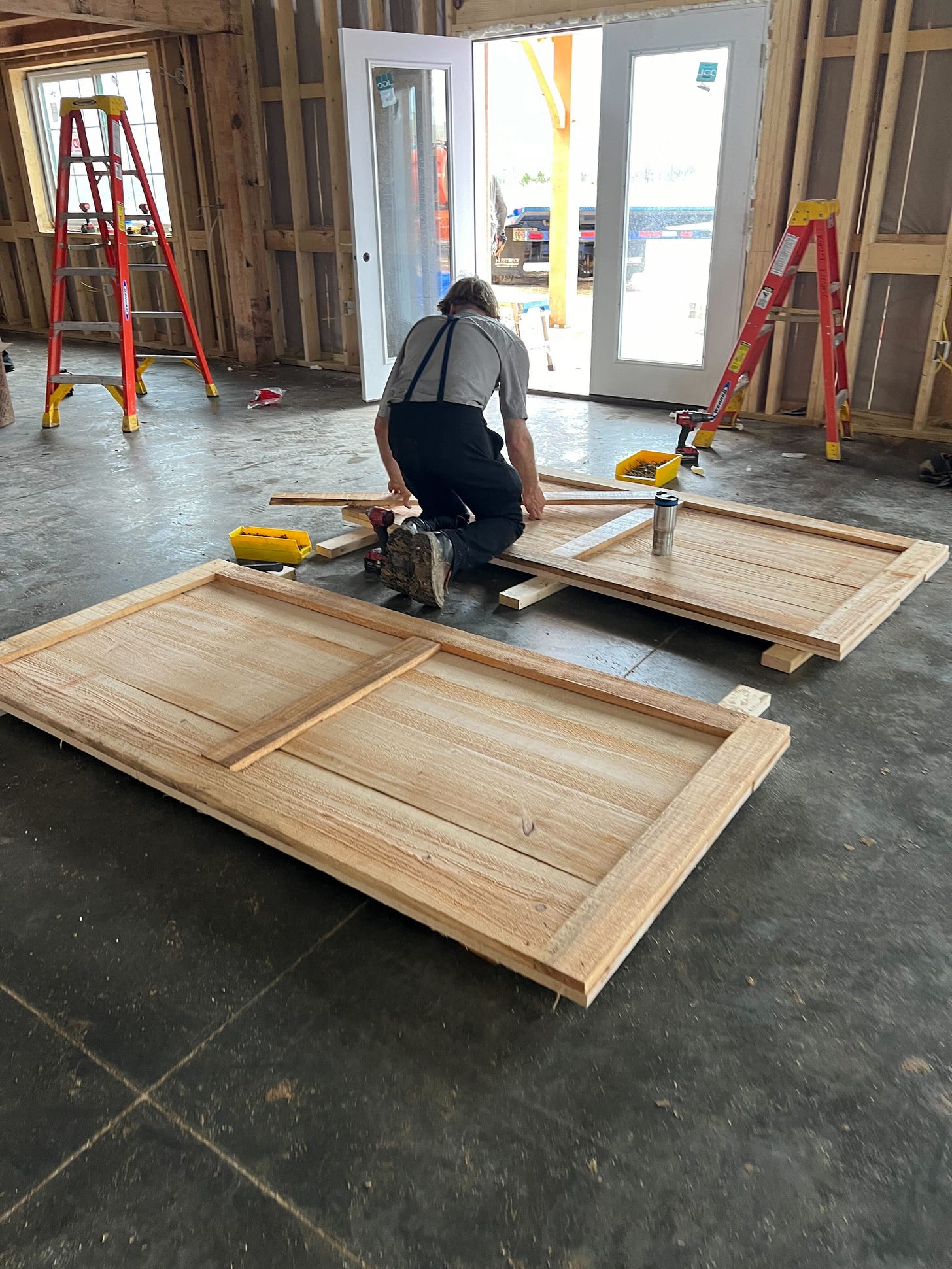
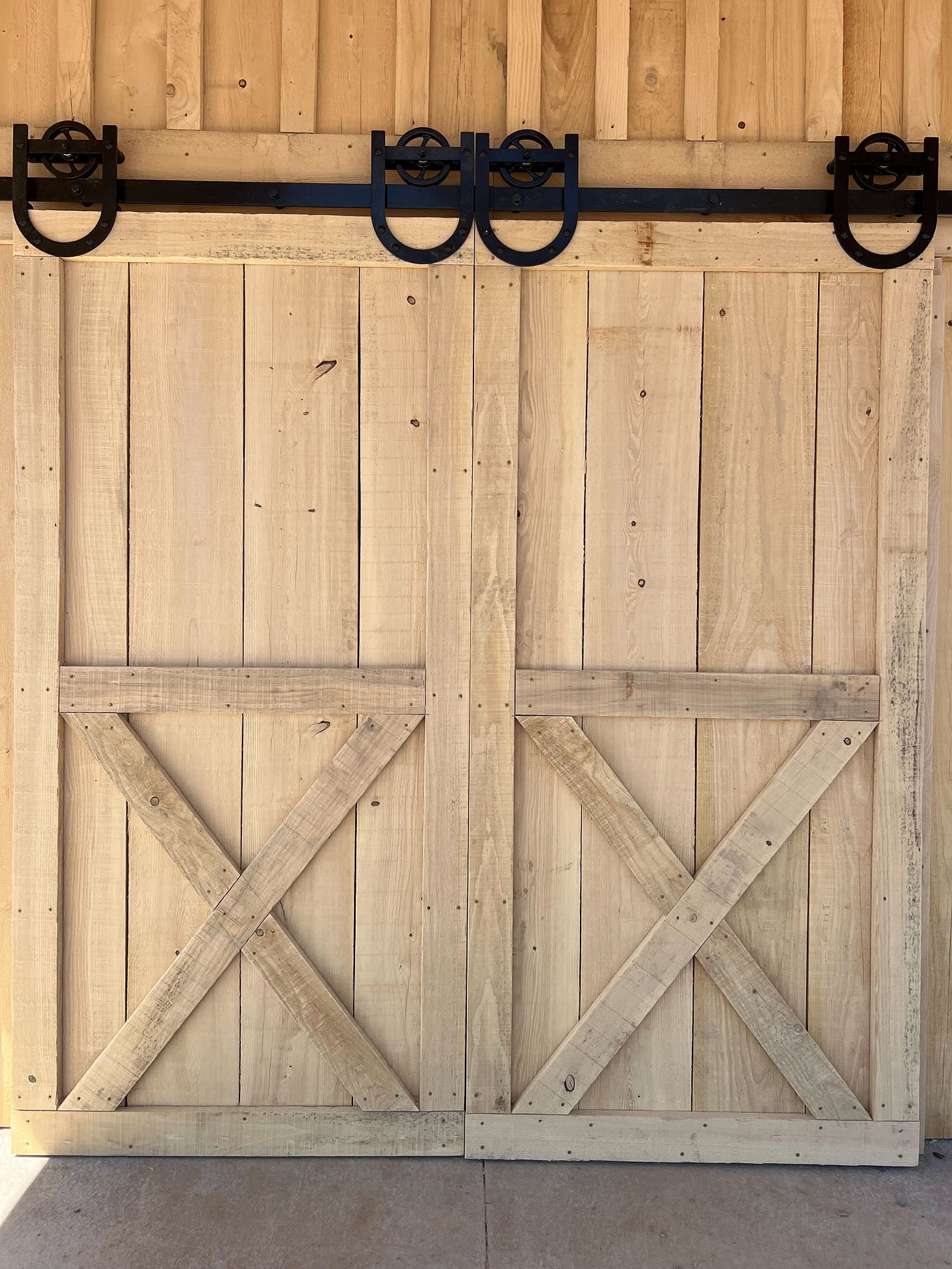
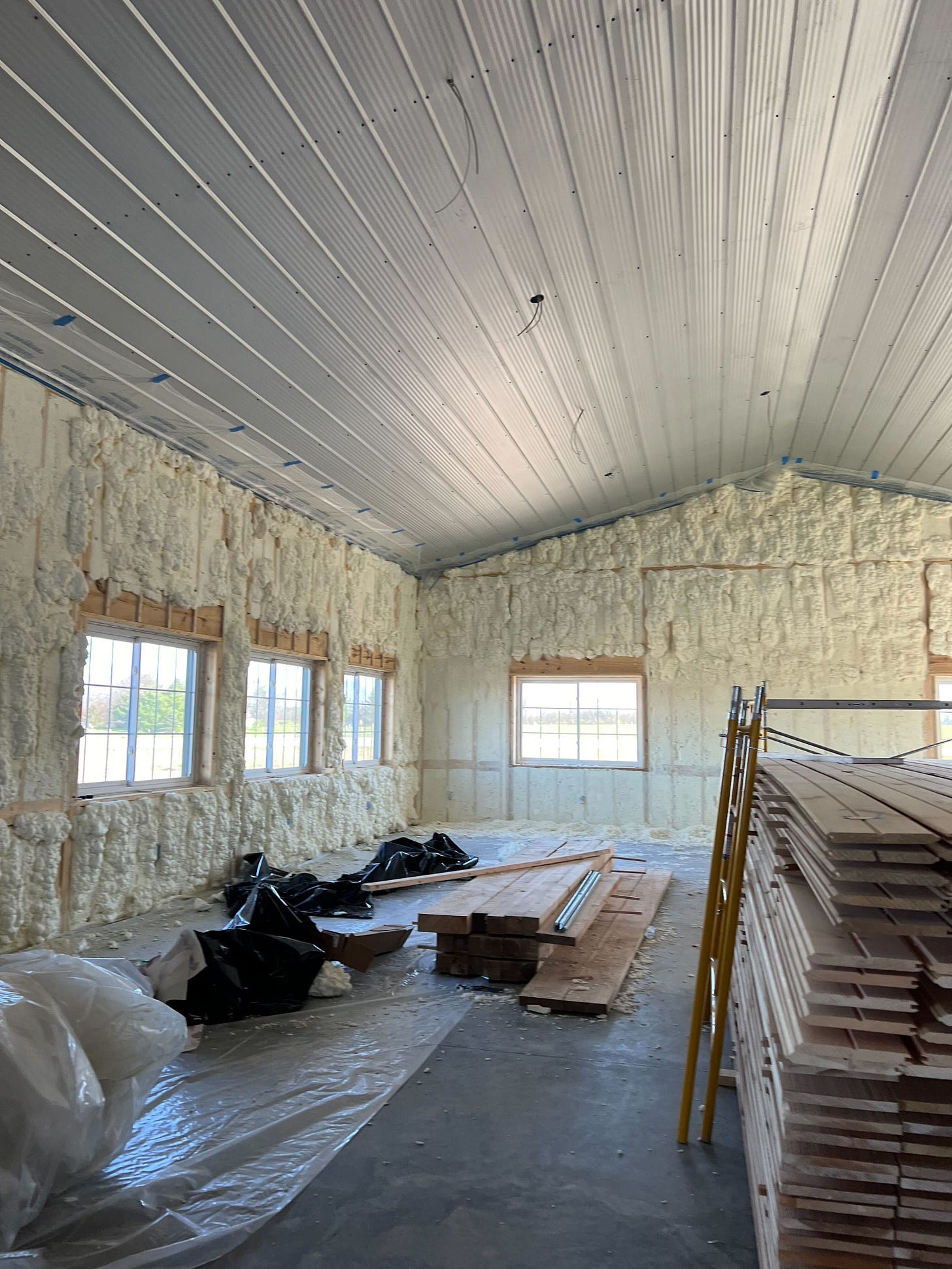
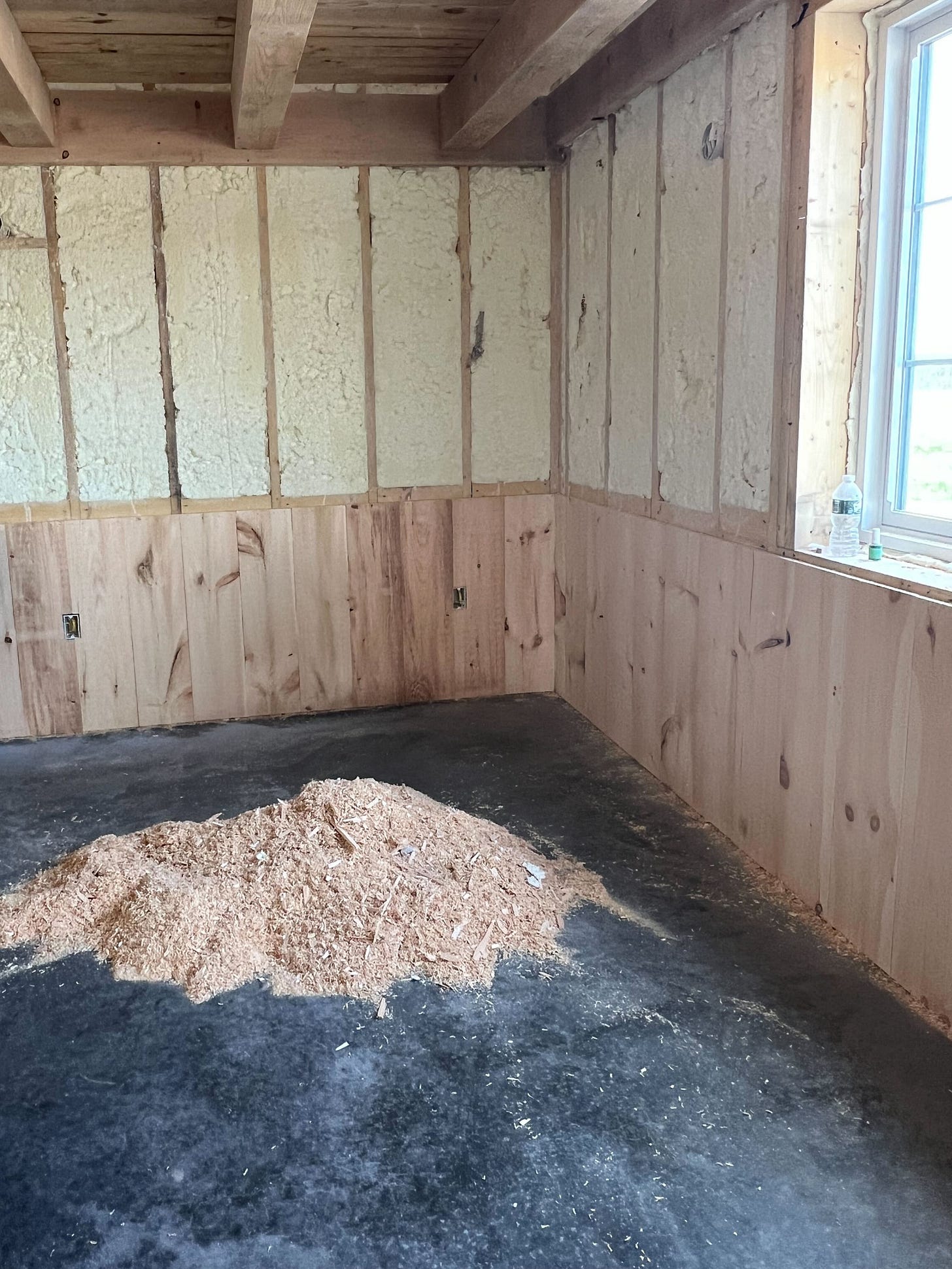
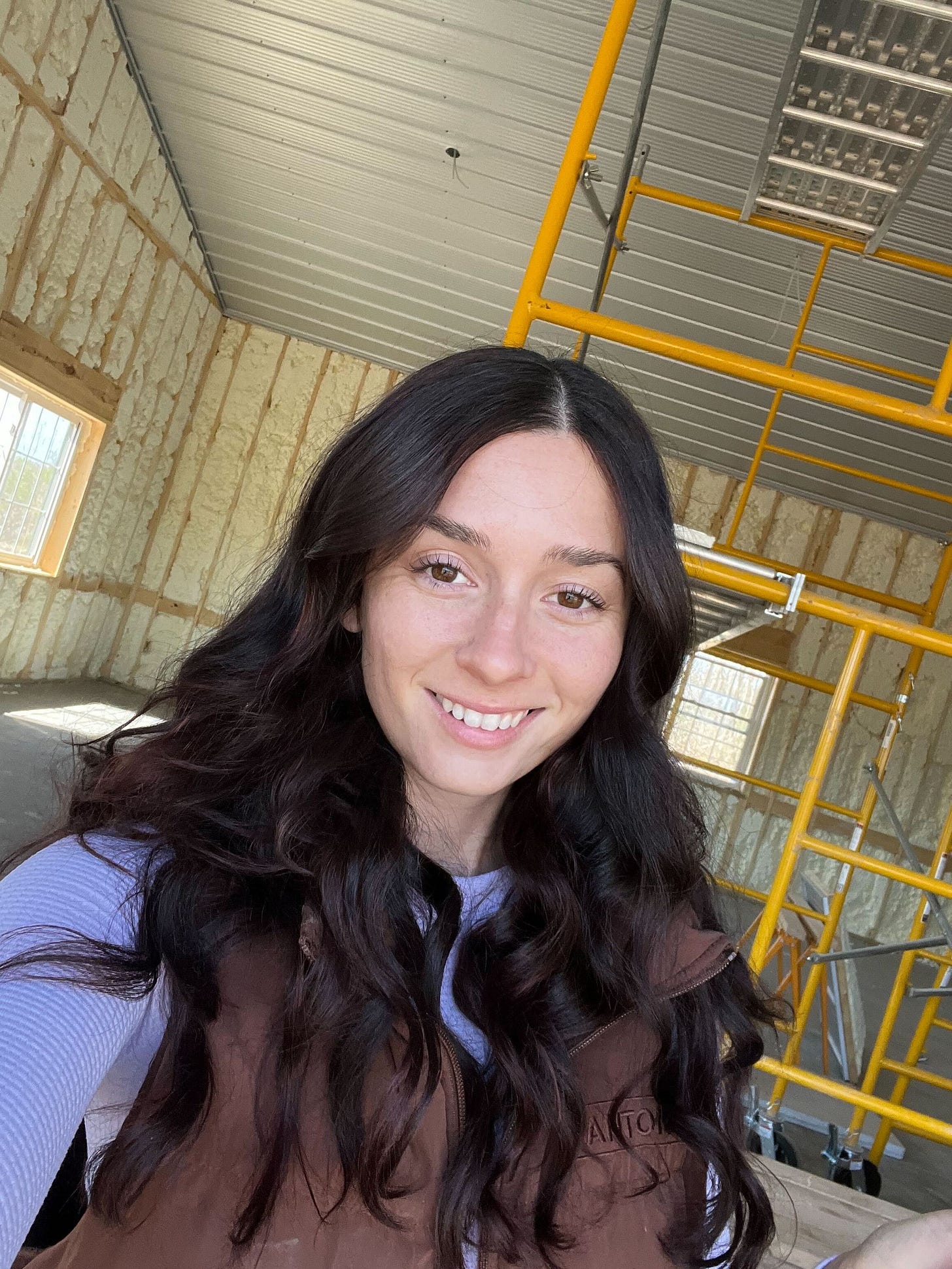
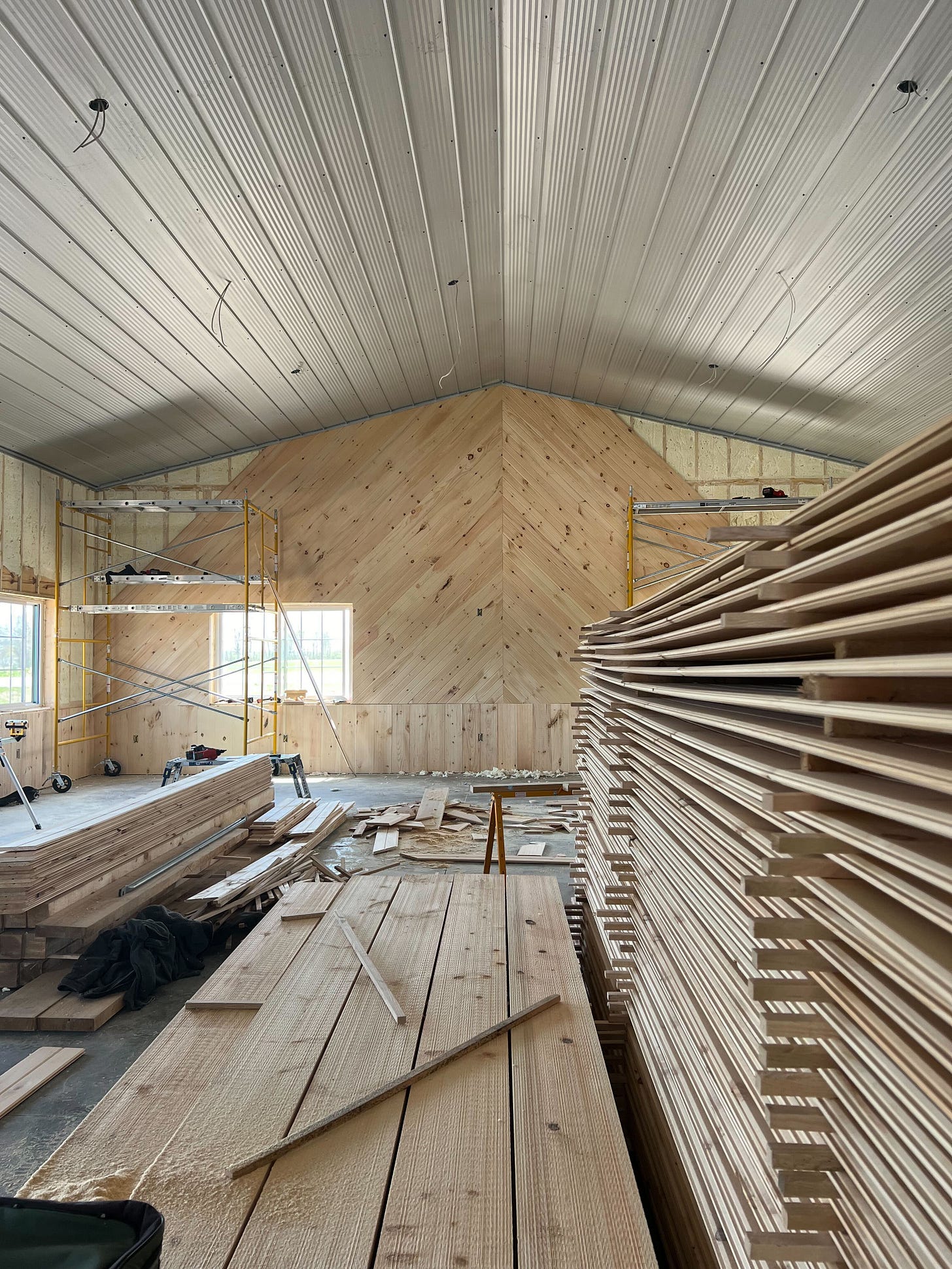
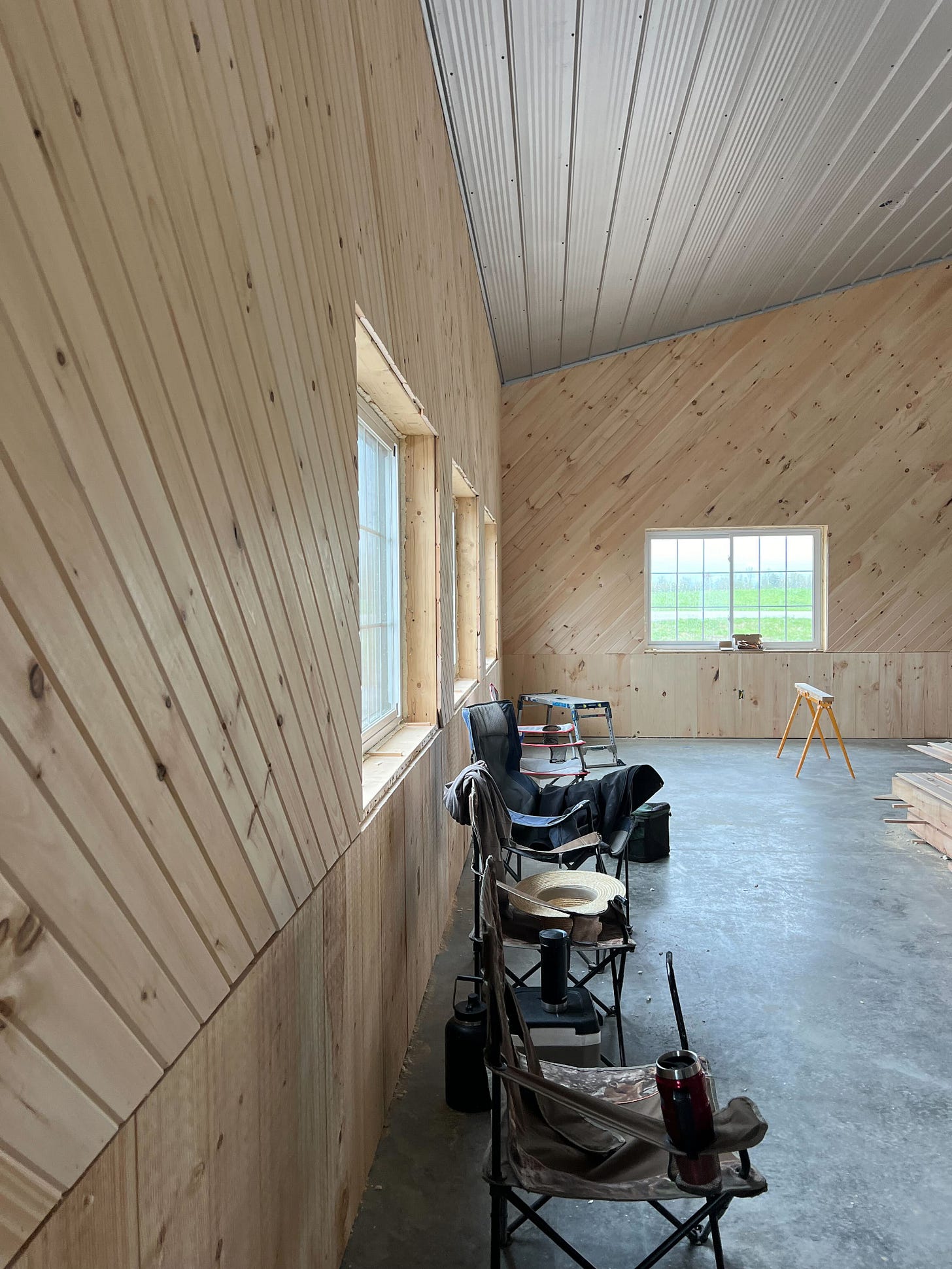


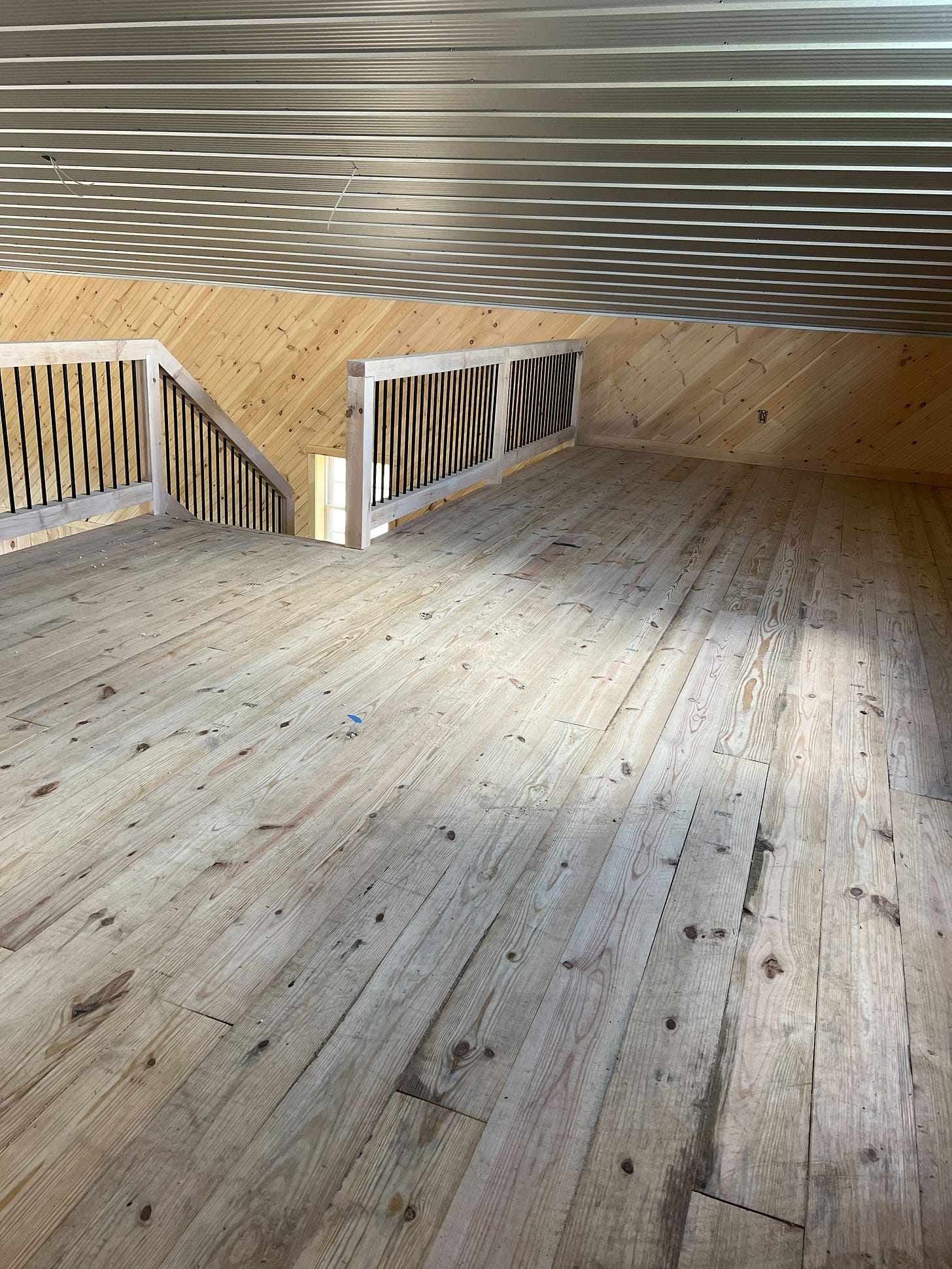
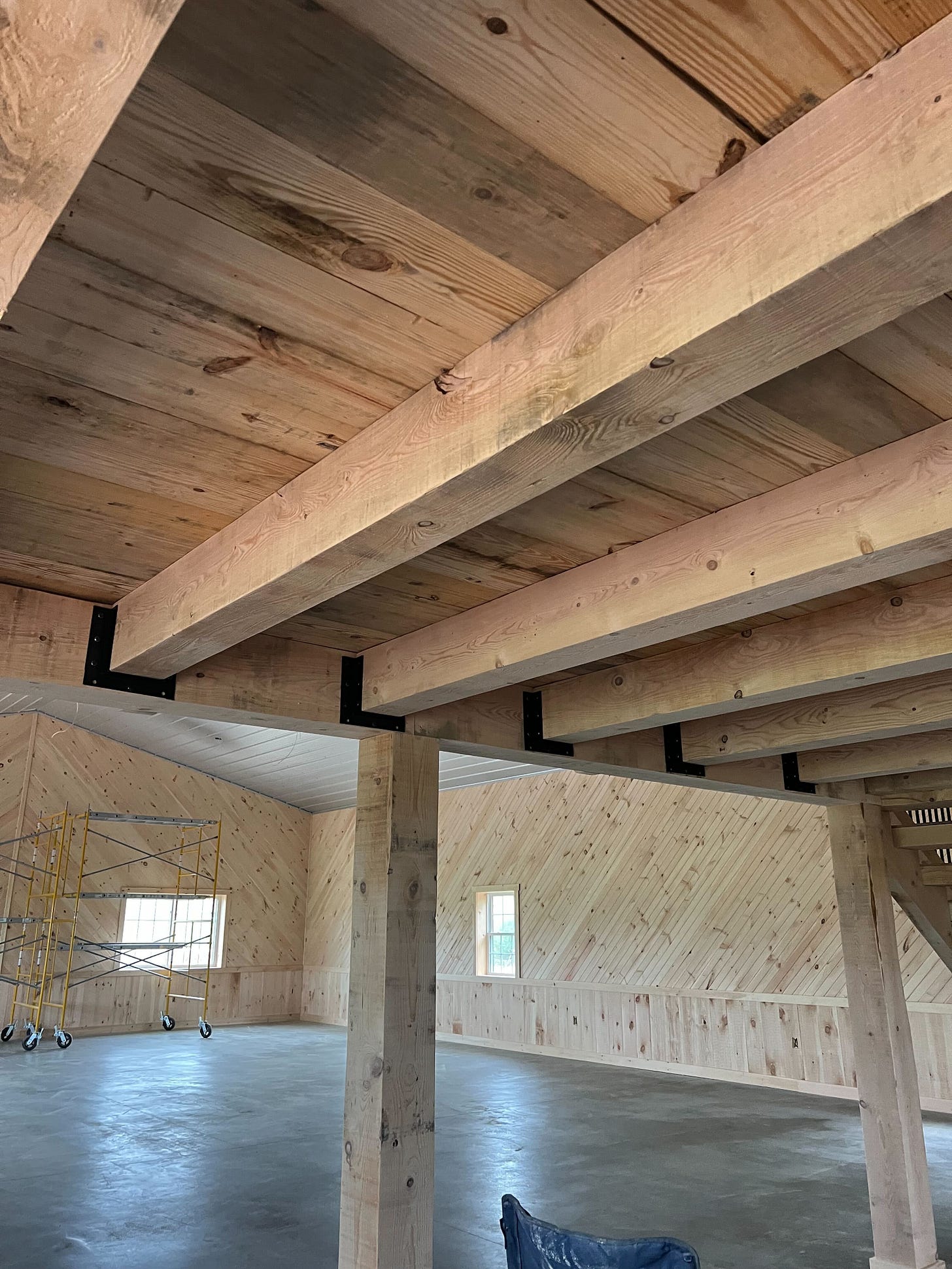
The Amish were right all along. They also have job skills that are recession/depression proof
The writer Gene Logsden included in his books a fair amount of his experience with Amish. Lots of things come to mind but one of their attributes that stands out is their outstanding business sense. They are exceptionally profitable. Logsden died a few years ago. I need to revisit his work. For anyone interested, his Contrary Farmer is a solid start.